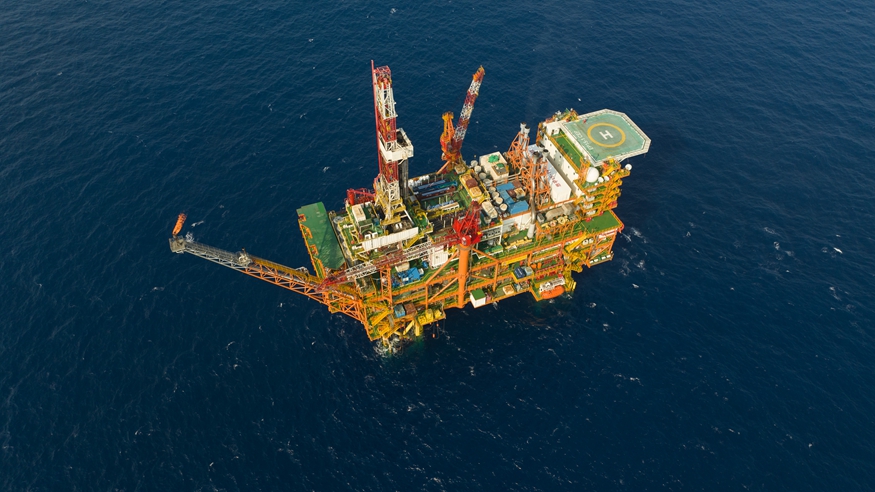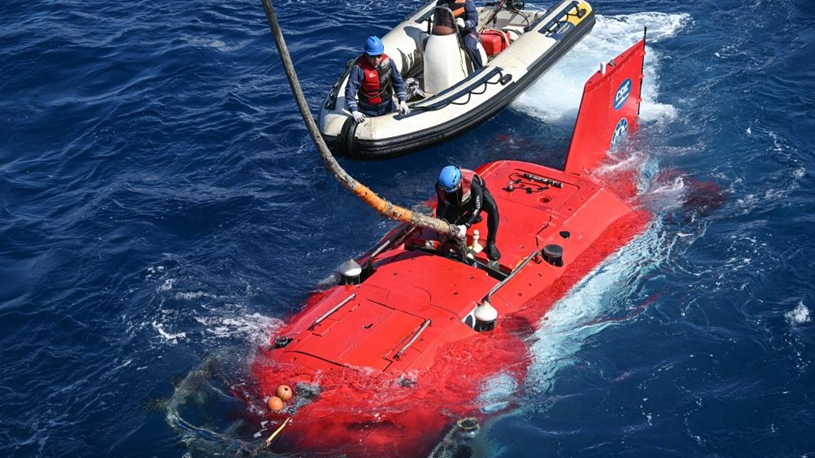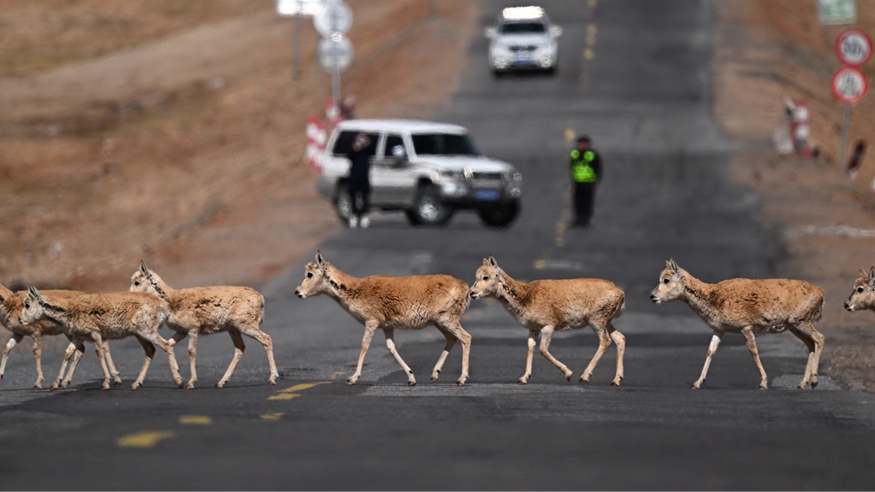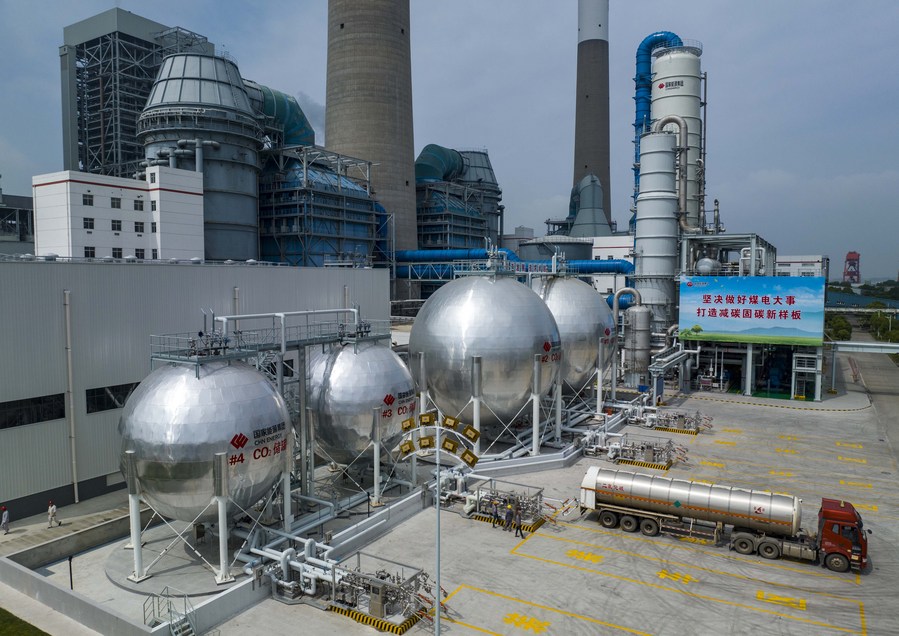
This aerial photo taken on June 1, 2023 shows workers loading carbon dioxide at Taizhou coal-fired power plant of China Energy Investment Corporation (China Energy) in Taizhou, east China's Jiangsu Province. (Photo by Tang Dehong/Xinhua)
by Xinhua writer Zhang Zhaoqing
NANJING, June 3 (Xinhua) -- The China Energy Investment Corporation (China Energy) on Friday put into use a mega carbon capture, utilization and storage (CCUS) facility in one of its subsidiary coal-fired power plants in east China's Jiangsu Province, amid China's efforts to achieve carbon neutrality.
Attached to a generation unit at China Energy's Taizhou coal-fired power plant, the project will capture 500,000 tonnes of carbon dioxide (CO2) every year, according to China Energy.
The facility has become Asia's largest CCUS project for the coal-fired power generation sector. It is also the world's third-largest, after one in the United States and another in Canada, China Energy said.
"During the project's trial run, the CCUS system demonstrated reliable performance and high safety standards, and the energy efficiency indicators and product quality are at or above their designed levels," said Ji Mingbin, president of China Energy's Jiangsu branch.
TECH INNOVATION
At the CCUS facility, thick pipelines link the smokestacks with steeping towers. Flue gas would go through the towers. CO2 from the emissions would bond with the amine chemicals at low temperatures in a tower, and the carbon would be released when re-heated in another. The separated CO2, almost pure, is then pressurized and transferred to storage containers.
As its fourth and largest carbon capture project ever, China Energy has made substantial upgrades to its CO2 capture and compressing technologies, largely reducing second-time energy consumption and cutting absorbent costs.
"It is not an easy process as we want to find an amine absorbent that is energy-efficient, highly stable and endurable," said Xu Dong, director of the carbon neutrality center of the Guodian Institute of New Energy Technology, which is affiliated with China Energy.
Unlike carbon capturing in other scenarios, the concentration of CO2 from the flue gas is usually at or below 15 percent, Xu said, adding that the research team has completed more than 1,000 tests to find a suitable absorbent.
With self-developed amine mixtures, capturing one tonne of CO2 takes less than 90 kilowatt-hours of electricity, and the carbon capture rate is increased to over 90 percent and re-heating energy consumption is down by over 35 percent, China Energy said.
The team partnered with other institutes to produce the largest CO2 compressor nationwide. "We have realized the 100 percent domestic production of equipment in our CCUS project," Xu said.
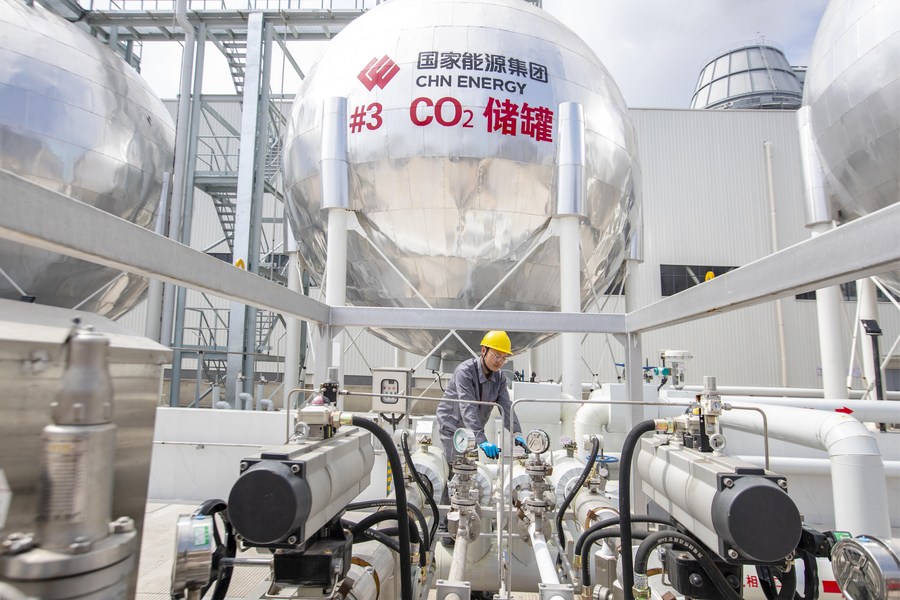
A technician checks the carbon capture, utilization and storage facility before operation at the Taizhou coal-fired power plant of China Energy Investment Corporation (China Energy) in Taizhou, east China's Jiangsu Province, June 1, 2023. (Photo by Tang Dehong/Xinhua)
COMMERCIAL OPERATIONS
Though the CCUS project is regarded as a viable way to realize carbon neutrality in the energy sector, it faces issues in making profits and in narrow application scenarios. "The inability to achieve the full consumption of CO2 has been a blockage limiting the sustainable operation of CCUS projects," Ji said.
To tackle the problem, the China Energy Taizhou power generation plant undertook in-depth research in 2019, which showed that a vast number of chemical, ship-manufacturing and food companies in Jiangsu had abundant market demand of approximately 1 million tonnes of CO2 per year.
Ji revealed that the cost of producing a tonne of CO2 is around 250 yuan (about 35 U.S. dollars), and all CO2 produced and captured can be utilized, as the company has already secured contracts with eight firms. Primary applications for the captured CO2 include dry-ice manufacturing and the production of shielding gases for welding.
"The purity of our CO2 has reached 99.99 percent, which meets the requirements to be added to beverages like cola," Ji said, "In the future, we look forward to selling CO2 to the nearby regions like Zhejiang and Shanghai, and maybe abroad to South Korea and Japan."
CARBON REDUCTION ENDEAVORS
China lowered coal-fired power generation to below 60 percent of its total power generation in 2022. However, coal will remain as a primary power generation source for a long time, given the country's coal-dominated energy resource endowment.
China Energy, a coal-fired power generation giant, is one of the leading companies building pilot carbon capture and storage (CCS) projects in China. These projects are among the country's endeavors to achieve carbon neutrality by 2060.
The company launched its first CCS project of 100,000 tonnes in 2011, and a 150,000-tonne CCS project in 2021. Early this year, it also realized the mineralization of CO2 in a CCS project in Datong City, central China's Shanxi Province.
"China Energy will continue its endeavors to strengthen technological innovation, and contribute efforts to the country's carbon neutrality goal," said Zhang Changyan, a spokesperson for China Energy. ■


